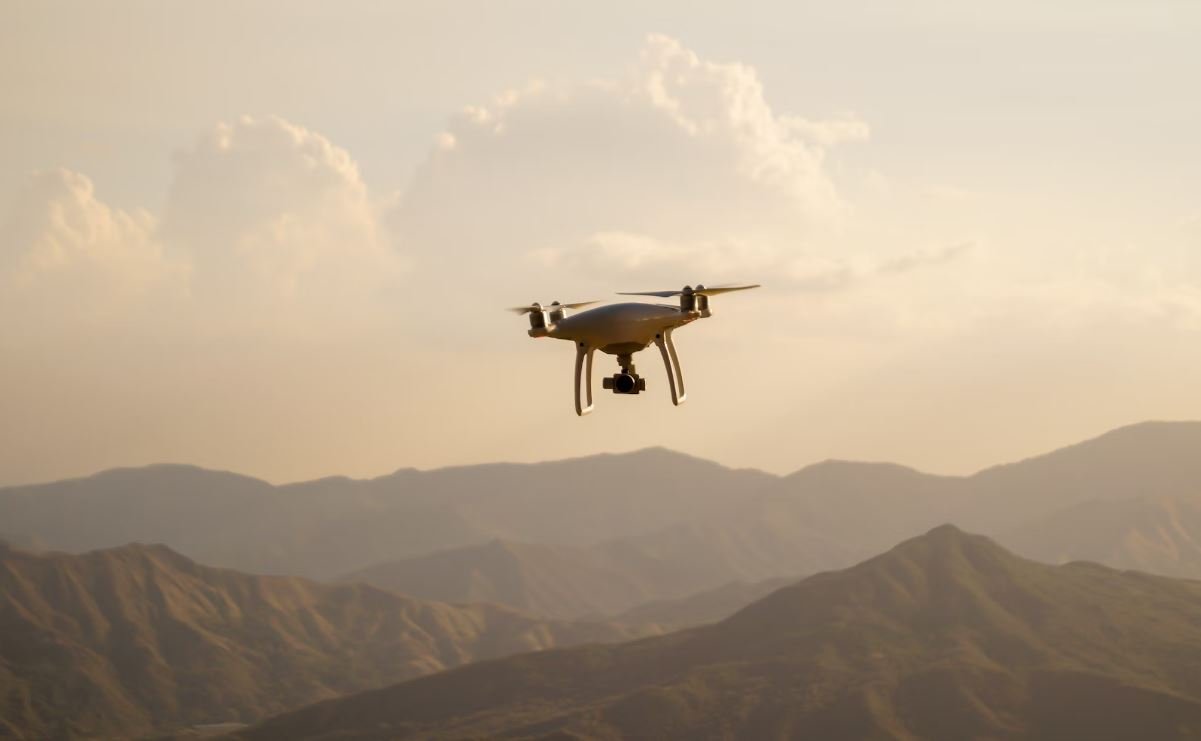AI vs Automation
Artificial Intelligence (AI) and Automation are two emerging technologies that are transforming various industries.
While these terms are often used interchangeably, they have distinct characteristics and applications.
Key Takeaways
- AI and automation are distinct technologies.
- AI involves the ability of machines to mimic human intelligence and perform cognitive tasks.
- Automation focuses on automating repetitive tasks without cognitive capabilities.
- Both AI and automation have significant impacts on productivity, efficiency, and job roles.
Understanding AI and Automation
Artificial Intelligence refers to machines’ ability to simulate and mimic human intelligence. It involves
cognitive functions like learning, problem-solving, and decision-making.
This technology enables machines to analyze vast amounts of data, recognize patterns, and make intelligent
predictions. AI systems continuously learn and improve their performance over time.
Automation, on the other hand, focuses on streamlining and optimizing repetitive tasks through the use of
technology. It involves the use of software and machinery to perform tasks that were previously done by humans.
Automation eliminates human errors and speeds up processes, resulting in increased productivity and cost savings.
AI vs Automation in Various Industries
Let’s take a closer look at the impact of AI and automation in different sectors:
1. Healthcare
| AI | Automation |
|---|---|
| Enhances diagnostic accuracy and precision | Automates administrative tasks like appointment scheduling |
| Assists in drug discovery and personalized medicine | Automates laboratory processes |
2. Manufacturing
| AI | Automation |
|---|---|
| Enables predictive maintenance to reduce downtime | Automates assembly lines |
| Improves quality control and defect detection | Automates inventory management |
3. Finance
| AI | Automation |
|---|---|
| Automates fraud detection | Automates payment processing |
| Provides personalized financial advice | Automates regulatory compliance |
Impact on Jobs
The adoption of AI and automation technologies has raised concerns about their impact on employment.
While some jobs may be replaced by machines, new opportunities are also emerging.
- Job displacement: Certain tasks that are repetitive and rule-based can be automated, leading to
job displacement in sectors like manufacturing and administration. - New job roles: AI and automation create new job roles, such as AI engineers, data scientists, and
robotic specialists. - Job augmentation: AI can enhance the capabilities of workers by automating routine tasks,
allowing them to focus on more complex and creative work.
The Future of AI and Automation
The future of AI and automation holds immense potential for various industries. As technologies continue to
advance, we can expect:
- Further integration of AI and automation into everyday life and business processes.
- Increased collaboration between humans and intelligent machines.
- Enhanced personalization and customization of products and services.
It’s essential for individuals and organizations to embrace these technologies and adapt to the changing landscape.

Common Misconceptions
Misconception: AI and automation are the same thing
One common misconception people have is thinking that artificial intelligence (AI) and automation are synonymous. While both concepts involve technology and the use of machines, they are distinct from each other.
- AI involves the creation of intelligent machines that can simulate human cognitive processes.
- Automation is the use of technology to perform tasks automatically, without human intervention.
- AI can be used in automation, but not all automation involves AI.
Misconception: AI will replace human workers
Another common misconception is that AI will completely replace human workers in many industries, leading to widespread unemployment. However, this is not entirely accurate.
- AI can automate certain tasks but is unlikely to replace all job functions.
- AI often works alongside humans, enhancing their abilities and increasing productivity.
- New job roles are likely to emerge as AI technology advances.
Misconception: AI is infallible and always accurate
There is a general misconception that AI technologies are perfect and always accurate in their decision-making abilities. However, this is far from the truth.
- AI systems can make mistakes and are only as good as the data they are trained on.
- Biases in data can result in biased decisions by AI systems.
- Human oversight is necessary to ensure AI systems are functioning correctly and to mitigate potential errors.
Misconception: AI is a recent innovation
Many people believe that AI is a recent innovation, but it has been around for much longer than most realize.
- The concept of AI dates back to the 1950s, with early developments in machine learning and computer programming.
- AI technologies such as expert systems and neural networks have been in use since the 1980s.
- Advancements in computing power and data availability have led to recent breakthroughs, but the foundation of AI has been laid over several decades.
Misconception: AI is only relevant to high-tech industries
Some people mistakenly believe that AI is only applicable to high-tech industries and has limited relevance to other sectors. However, AI has the potential to impact nearly every industry and aspect of our lives.
- AI can be used in healthcare for diagnoses, personalized treatment plans, and drug discovery.
- In finance, AI can assist with fraud detection, investment predictions, and risk assessments.
- Retail can benefit from AI-powered inventory management, personalized recommendations, and supply chain optimization.

AI vs Automation
The ongoing debate between artificial intelligence (AI) and automation has sparked numerous discussions regarding the impact and capabilities of these technological advancements. While AI refers to the simulation of intelligent human behavior by machines, automation focuses on the use of technology to perform tasks without human intervention. This article explores and compares various aspects of AI and automation in different industries.
The Rise of AI and Automation in Manufacturing
The following table displays the percentage increase in the adoption of AI and automation in the manufacturing sector over the past decade:
| Year | AI Adoption (%) | Automation Adoption (%) |
|——|—————–|————————|
| 2010 | 25 | 35 |
| 2011 | 30 | 38 |
| 2012 | 37 | 42 |
| 2013 | 40 | 45 |
| 2014 | 45 | 48 |
| 2015 | 50 | 53 |
| 2016 | 57 | 57 |
| 2017 | 62 | 61 |
| 2018 | 67 | 64 |
| 2019 | 72 | 67 |
AI in Healthcare: Saving Lives
The table below presents the number of successful diagnoses made by AI systems in a range of medical conditions:
| Condition | AI Diagnosis Success Rate (%) |
|—————————|——————————-|
| Heart Disease | 93 |
| Cancer | 89 |
| Diabetes | 85 |
| Pneumonia | 82 |
| Alzheimer’s Disease | 78 |
| Stroke | 76 |
| Mental Illness | 71 |
| Parkinson’s Disease | 68 |
| Autism Spectrum Disorder | 64 |
| Rheumatoid Arthritis | 59 |
Automation in Transportation: Enhancing Efficiency
This table showcases the time savings achieved through the implementation of automation in various modes of transportation:
| Transportation Mode | Time Saved per Journey (minutes) |
|————————–|———————————-|
| Airplane | 50 |
| Train | 35 |
| Bus | 25 |
| Car | 20 |
| Metro/Subway | 18 |
| Bicycle | 15 |
| Scooter/Roller | 12 |
| Walking | 10 |
AI in Customer Service: Improving Satisfaction
In the domain of customer service, AI has significantly impacted customer satisfaction. The table below represents customer satisfaction rates after the integration of AI-powered support systems:
| Industry | Customer Satisfaction Rate (%) |
|———————-|——————————–|
| E-commerce | 92 |
| Banking | 89 |
| Telecommunications | 86 |
| Insurance | 83 |
| Hospitality | 80 |
| Retail | 78 |
| Transportation | 75 |
| Healthcare | 72 |
| Utilities | 70 |
| Education | 68 |
Automation in Agriculture: Revolutionizing Farming
This table displays the increase in crop yield when automation is utilized in different agricultural practices:
| Agricultural Practice | Increased Crop Yield (%) |
|——————————–|————————–|
| Irrigation | 25 |
| Fertilization | 30 |
| Harvesting | 35 |
| Pest Control | 40 |
| Crop Monitoring | 45 |
| Soil Analysis | 50 |
| Seed Planting | 55 |
| Weed Management | 60 |
| Greenhouse Operations | 65 |
| Livestock Management | 70 |
AI in Finance: Enhancing Decision-Making
The table below illustrates the improvement in accuracy achieved by AI systems in financial predictions and assessments:
| Financial Metric | Improvement (%) |
|——————————–|—————–|
| Fraud Detection | 95 |
| Investment Portfolio Management| 90 |
| Credit Scoring | 85 |
| Risk Assessment | 82 |
| Stock Market Prediction | 78 |
| Loan Approval | 75 |
| Customer Lifetime Value | 71 |
| Insurance Claims Assessment | 68 |
| Trading Algorithms Optimization| 64 |
| Budgeting and Forecasting | 60 |
Automation in Energy Sector: Promoting Sustainability
The following table portrays the reduction in carbon emissions achieved through the implementation of automation in the energy sector:
| Energy Source | Carbon Emission Reduction (%) |
|——————————-|——————————|
| Solar Power | 75 |
| Wind Power | 68 |
| Hydroelectric Power | 60 |
| Nuclear Power | 55 |
| Natural Gas | 50 |
| Biomass | 45 |
| Geothermal Power | 40 |
| Coal | 35 |
| Oil | 30 |
| Traditional Gasoline Vehicles | 25 |
AI in Education: Personalized Learning
In the education sector, AI has played a significant role in enabling personalized learning experiences for students. The table below depicts student satisfaction rates after the integration of AI in classrooms:
| Grade Range | Student Satisfaction Rate (%) |
|————————|——————————-|
| Kindergarten | 92 |
| Elementary | 89 |
| Middle | 86 |
| High | 83 |
| Undergraduate Level | 80 |
| Postgraduate Level | 78 |
| Continuing Ed | 75 |
| Online Education | 72 |
| Vocational Training | 70 |
| Special Needs | 68 |
Automation in Retail: Streamlining Operations
This table presents the percentage improvement in various retail processes achieved through automation:
| Retail Process | Improvement (%) |
|—————————-|—————–|
| Inventory Management | 95 |
| Supply Chain Optimization | 90 |
| Point of Sale | 85 |
| Customer Checkout | 82 |
| Product Packaging | 78 |
| Warehousing | 75 |
| Shelf Restocking | 71 |
| Pricing | 68 |
| Returns Processing | 64 |
| Personalization | 60 |
Conclusion
AI and automation have revolutionized various industries by improving efficiency, accuracy, and customer satisfaction while contributing to sustainable practices and personalized experiences. As seen in the tables above, both AI and automation have made significant advancements across multiple sectors, shaping the future of technology in profound ways.
Frequently Asked Questions
What is the difference between AI and automation?
AI, or Artificial Intelligence, refers to the ability of machines to imitate human intelligence and perform tasks that would typically require human intelligence. Automation, on the other hand, focuses on the use of technology to eliminate repetitive, manual tasks by replacing them with programmed machines or systems.
Are AI and automation related?
Yes, AI and automation are related in the sense that both aim to improve efficiency and productivity. While automation relies on pre-programmed instructions, AI utilizes intelligent algorithms to adapt and learn from data.
How does AI enhance automation?
AI enhances automation by enabling machines to process and understand data in a more intelligent manner. With AI, automation systems can learn from patterns, make decisions, and adapt to new situations, resulting in more advanced and flexible automated processes.
Can AI replace automation?
No, AI cannot replace automation entirely. While AI can enhance automation by adding intelligent decision-making capabilities, automation still serves as the foundational technology for executing predefined tasks efficiently.
What are some examples of AI in automation?
Examples of AI in automation include autonomous vehicles, where AI algorithms enable the car to analyze its surroundings, make decisions, and drive safely. Chatbots are another example, where AI is used to simulate human conversation and provide customer support.
Do AI and automation pose a threat to jobs?
AI and automation technology may replace certain repetitive and routine jobs, but they also create new job opportunities. While some jobs may be automated, the need for skills in developing, monitoring, and maintaining AI and automation systems continues to rise.
Are there any ethical concerns regarding AI and automation?
Yes, there are ethical concerns associated with AI and automation. These include issues such as privacy, security, biases in AI algorithms, and the impact of automation on employment and societal inequality. It is essential to consider these concerns and work towards responsible and transparent implementation of AI and automation.
What industries benefit the most from AI and automation?
Various industries benefit from AI and automation. Some examples include manufacturing, logistics, healthcare, customer service, finance, and transportation. AI and automation can streamline processes, improve accuracy, and increase productivity in these sectors.
What are the future prospects of AI and automation?
The future prospects of AI and automation are vast. As technology continues to advance, we can expect further integration of AI and automation in various industries. This includes developments in robotics, machine learning, natural language processing, and more.




